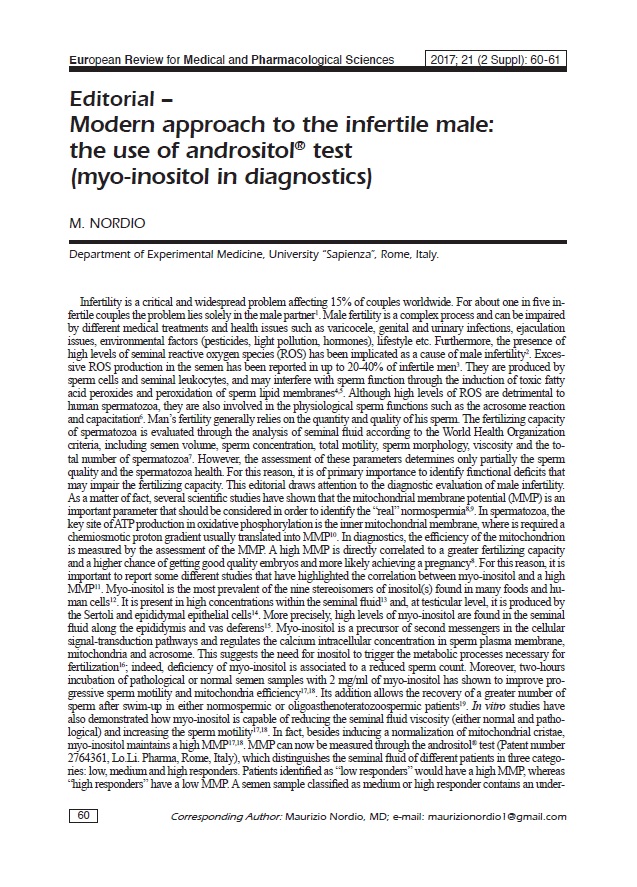Authors:
M. Nordio
Infertility is a critical and widespread problem affecting 15% of couples worldwide. For about one in five infertile couples the problem lies solely in the male partner1. Male fertility is a complex process and can be impaired by different medical treatments and health issues such as varicocele, genital and urinary infections, ejaculation issues, environmental factors (pesticides, light pollution, hormones), lifestyle etc. Furthermore, the presence of high levels of seminal reactive oxygen species (ROS) has been implicated as a cause of male infertility2. Excessive ROS production in the semen has been reported in up to 20-40% of infertile men3. They are produced by sperm cells and seminal leukocytes, and may interfere with sperm function through the induction of toxic fatty acid peroxides and peroxidation of sperm lipid membranes 4,5.

